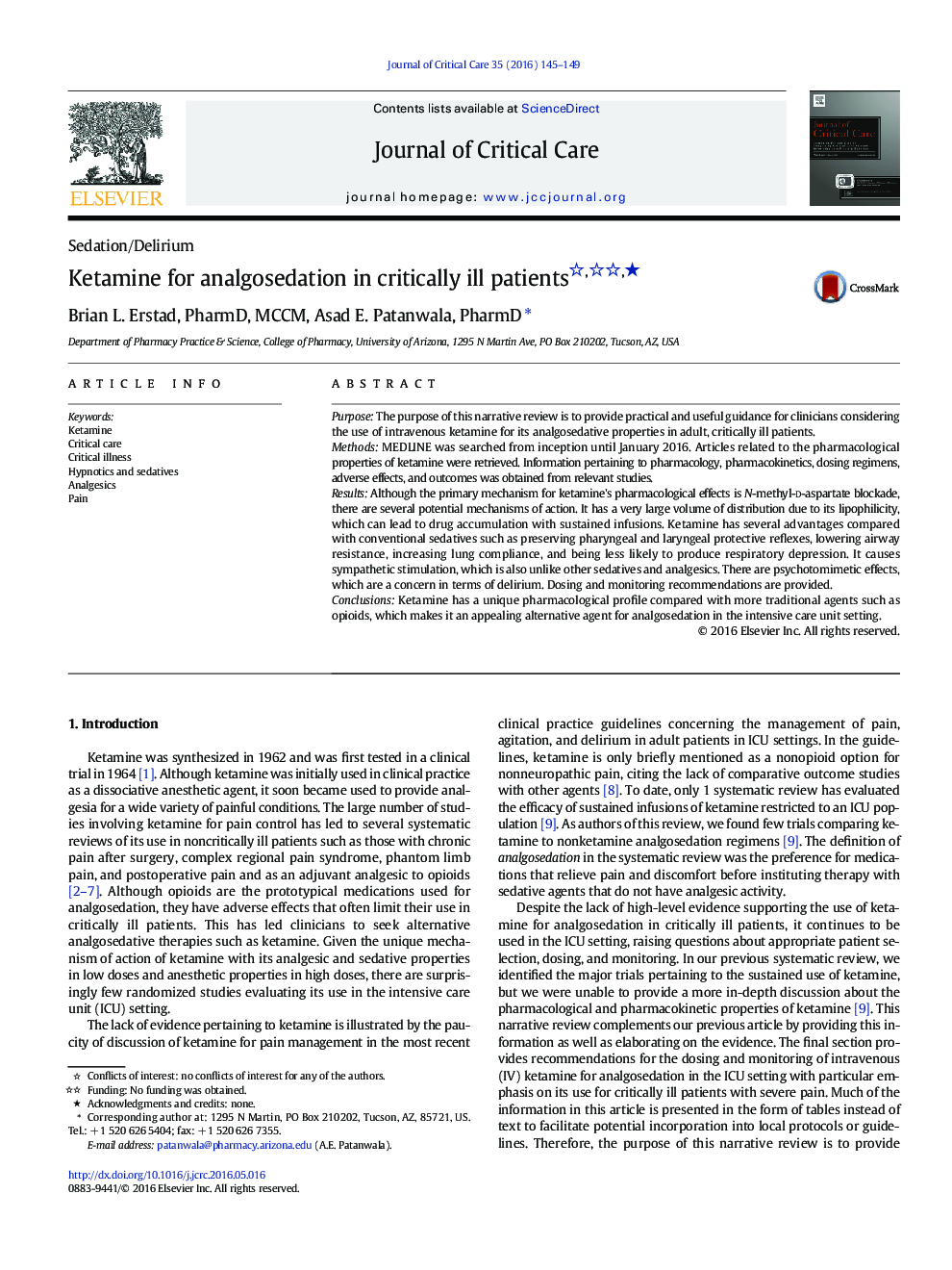| Article ID | Journal | Published Year | Pages | File Type |
|---|---|---|---|---|
| 2764427 | Journal of Critical Care | 2016 | 5 Pages |
PurposeThe purpose of this narrative review is to provide practical and useful guidance for clinicians considering the use of intravenous ketamine for its analgosedative properties in adult, critically ill patients.MethodsMEDLINE was searched from inception until January 2016. Articles related to the pharmacological properties of ketamine were retrieved. Information pertaining to pharmacology, pharmacokinetics, dosing regimens, adverse effects, and outcomes was obtained from relevant studies.ResultsAlthough the primary mechanism for ketamine's pharmacological effects is N-methyl-d-aspartate blockade, there are several potential mechanisms of action. It has a very large volume of distribution due to its lipophilicity, which can lead to drug accumulation with sustained infusions. Ketamine has several advantages compared with conventional sedatives such as preserving pharyngeal and laryngeal protective reflexes, lowering airway resistance, increasing lung compliance, and being less likely to produce respiratory depression. It causes sympathetic stimulation, which is also unlike other sedatives and analgesics. There are psychotomimetic effects, which are a concern in terms of delirium. Dosing and monitoring recommendations are provided.ConclusionsKetamine has a unique pharmacological profile compared with more traditional agents such as opioids, which makes it an appealing alternative agent for analgosedation in the intensive care unit setting.
